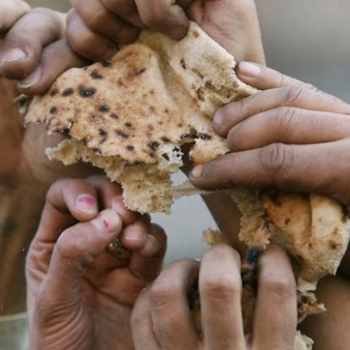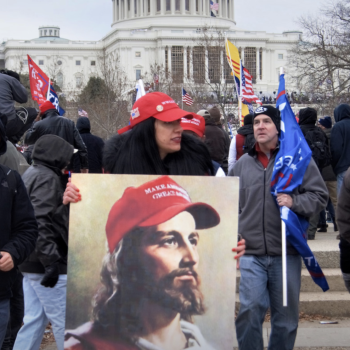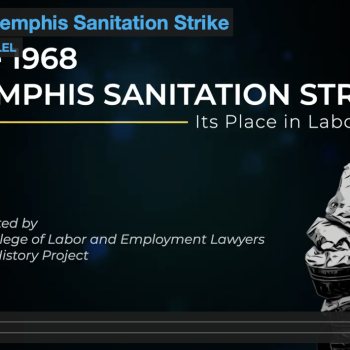Habits are hard to break.
Perhaps one of the bigger concerns church leaders have right now revolve around the new habits we were forced into that will now remain. In our efforts to stem the spread of the virus, we have habituated our entire churches to a new practice… not attending church on Sunday morning.
By and large our people, at least those of us in churches who have been following CDC guidelines, are not coming to church. And although most of us have been offering alternative formats (like livestreams or outdoor opportunities) these don’t necessarily have the same kind of public accountability and shape as in person church.
I mean, on another level and in the abstract, we all recognize that faith practices are much broader and deeper than Sunday church gatherings. But historically, most of us have measured the health of the church like most organizations measure their health–the presence of people… and financial support.
During this pandemic, early in the pandemic, some churches actually experienced an increase in giving.
There was in that early phase the same kind of spirit that accompanies major disasters or crises. People want to give. People want to help. And so giving increased and sustained.
In our church the total amount that we were able to give out on a monthly basis during the first year of the pandemic was remarkable. It reflected about a 30% increase over our regular giving. All of it went to help people in crisis, especially in our partnership in the Marshallese community.
We honestly didn’t see this level of giving before the pandemic.
But on the other hand, the giving and financial support for the general work of the church remained relatively steady or has even declined a certain percentage. Not as much as I had thought, given that we don’t gather on Sunday mornings. When church attendance declines, giving declines. Or at least, that was the pattern until recently.
And it’s remarkable on some levels that people have maintained the steadiness of their giving during the pandemic, when they haven’t been attending in person for over a year. Perhaps we’re thankful, those churches like ours that had emphasized and put into play online, recurring donations, because people were set up to give and continue to give even if they weren’t in church.
We can thank NPR for that inspiration.
But you can see why some churches went back as quickly as they could to in person church… because they understand how habits work. And if you get out of the habit of attending church, what are going to be the tipping point for re engaging? How will we know when to come back?
There’s that famous quote of William Temple, “The Church is the only society that exists for the benefit of those who are not its members.”
So that’s one remarkable aspect of the impact of the pandemic on churches. Our practice during the pandemic really has leaned into this teaching of Temple.
Although we had been a very outward focused church even before the pandemic, during the pandemic we’ve leaned into that. And leaned in hard. And we’ve seen the fruits.
Now, just because the church exists for its non members, doesn’t mean that the membership can sustain long term without practices that sustain them. To “exist” for others you need a certain level of group cohesion, identity, etc.
So that’s the other thing that we’ve been discovering and asking ourselves: What do people need? And how do you even do the things people need when you aren’t gathering regularly in person?. Sunday morning worship in particular was a space the church and its members looked regularly for spiritual succor and centering. So one thing we’ve learned–and really this is by necessity, each household or individual turning to it in their own way– is that the weight of faith and formation, when we don’t gather in person, is much more on us.
What’s our prayer life look like individually and at home? What are we reading? How are we engaging in the works of mercy? How are we considering our faith and how it impacts our work, study, family life?
We know intellectually we were always supposed to be relating Christian faith to these spaces, but quarantine thrust us back into those spaces in ways that gave us new perspective.
And so most churches in some way or another reframed resources so that people could engage faith practices on their own outside the church.
And if I’m not mistaken–and here I’m speaking systematically, about churches as a whole–one thing this illuminated was how weak overall as a community we had been in this area.
I don’t mean by this to place any blame on the members of churches. It’s more of a systemic thing. Those of us that are in leadership in the church have acted like it is primarily our responsibility to share faith and develop the community’s faith.
Many members in churches have relied on that leadership. Which is why people like to attend church when their pastor is in town, and attendance drops when there is a supply preacher..
In all likelihood, most Christians learn what they do or don’t know about the Bible from preaching on Sunday morning more than they do from reading it on their own.
So this presents a unique opportunity, if we are open to it, of returning to the “post pandemic,” whatever that looks like, having strengthened the two things we know we value very much in the church even if we haven’t always done them well: 1) being an organization that exists for its non-members, and 2) learning together, growing together in ways that do not lean on or rely on with too great of weight the institutional church, but rather lean on smaller groups: families, individuals, bubbles, circles.
I imagine when we “return” to the church that many people won’t. There are some who discovered during this pandemic how little they really need the church or desire to be connected to church.
Others will return awkwardly having felt like their social muscles are atrophied, and they will need our patience, we will need patience to be with each other. Others are going to come back thrilled to be among people they haven’t seen for a very long time.
It is the deep irony in all of this that the churches that will be changed the most by this long pause are the ones who took the virus the most seriously. If you are a church that just took a break for a few weeks at the beginning of the pandemic and then went back to church, maybe you’ve maintained more of your community habits of gathering.
But at the same time, you’ve gone against the best advice of the CDC and your own denomination about how to keep people safe during the pandemic.
The reality: our church hasn’t really gathered together in person as a whole church since March of 2020. We’re still not gathering in September of 2021 in our sanctuary. What had been the beating heart of our habits, and the largest gathering each week of our church has been on pause for eighteen months.
But we have also lost zero members to COVID. We didn’t even have any COVID related hospitalization. Our community was on the very strict side of quarantining, getting vaccinated, wearing masks, and it shows.
So I’m okay with taking the participation hit. Re-engagement is going to be hard, but I’m up for the challenge.
If meeting the challenges of rebuilding habits is what is necessary for people to have remained safe and well, I’m all in.
One wise member of my church pointed out to me the aspect of healing and time. She said, “Often it takes as much time to recover from something as the time you were in it.” For example, it may take nine months to recover from pregnancy because they were pregnant for 9 months.
If that’s the case the truth is our recovery process won’t begin until we are at the end of the pandemic, whenever that is. And it will take as long as we were in it to recover.
We’re already at 18 months. It’s going to take time. This has been a disaster, but unlike a hurricane that rolls through and is gone, this disaster is occuring slowly, rolling, over a long period of time.
But if you maintain that metaphor of pregnancy and birth, it’s also the case that families who are pregnant, adapting as they do, preparing the house for the baby, what emerges at the end of the time is… a baby!
And that new baby changes things… the family structure, and all the habits.
And I like to think of the process as a kind of birthing. As a pastor and as a dad, I gotta say I love babies–from the smell at the top of a newborn baby’s head to the promise of new life.
And the gurgles and the smiles and the messy, the diapers, all of it.
Which is ultimately why I’m all in on this. There’s some talk that many clergy will leave the ministry during this pandemic and already are. And if that’s their calling to go on to other things, I wish them well.
But for me, I’m sticking with it. I’ve got the co parenting plan in place. I’m ready for other pivots that may surprise me. And I already love that baby.












